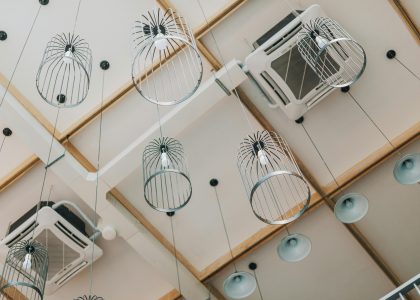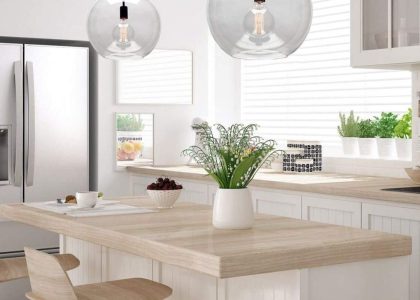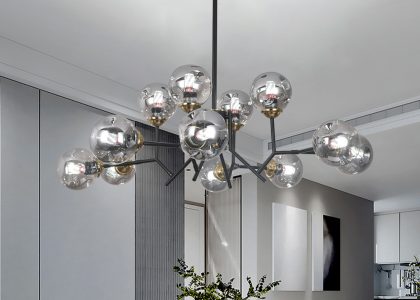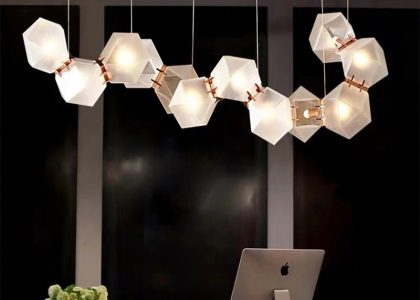Modern interior design is a style that emphasizes simplicity, clean lines, and functionality. It is characterized by open spaces, minimalistic furniture, and a neutral color palette. This style has gained popularity in recent years due to its timeless appeal and ability to create a sense of calm and tranquility in a space.
Lighting fixtures play a crucial role in modern interior design. They not only provide illumination but also serve as decorative elements that can enhance the overall aesthetic of a room. The right lighting fixtures can create a warm and inviting atmosphere, highlight architectural features, and set the mood for different activities.
Understanding the Role of Lighting in Interior Design
Lighting is an essential element in interior design as it has the power to transform a space and create different moods and atmospheres. It can make a room feel cozy and intimate or bright and energetic. The right lighting can also highlight architectural features, artwork, and furniture, adding depth and visual interest to a space.
There are three main types of lighting used in interior design: ambient lighting, task lighting, and accent lighting. Ambient lighting provides overall illumination to a room and sets the general mood. Task lighting is focused on specific areas where activities such as reading or cooking take place. Accent lighting is used to highlight specific objects or areas, such as artwork or architectural features.
Lighting also plays a crucial role in how we perceive space. Well-placed lighting fixtures can make a room appear larger or smaller, depending on the desired effect. For example, using recessed lighting along the edges of a room can create the illusion of more space, while using pendant lights in a small area can make it feel more intimate.
The Latest Trends in Lighting Fixtures for Modern Interiors
In recent years, there have been several trends in lighting fixtures for modern interiors. One popular trend is the use of geometric shapes and clean lines. Lighting fixtures with angular designs and sharp edges can add a contemporary touch to a space and complement the clean lines of modern furniture.
Another trend is the use of natural materials such as wood and metal. Lighting fixtures made from these materials can add warmth and texture to a room, creating a cozy and inviting atmosphere. Additionally, incorporating natural materials in lighting fixtures can help bring the outdoors inside, creating a connection with nature.
One of the latest trends in lighting fixtures is the use of smart technology. Smart lighting allows homeowners to control their lights remotely using a smartphone or voice commands. This technology not only adds convenience but also allows for more flexibility in creating different lighting scenes and moods.
How to Choose the Right Lighting Fixtures for Your Home
When choosing lighting fixtures for your home, there are several factors to consider. First, think about the function of the space and how you will be using it. Different activities require different types of lighting, so it’s important to choose fixtures that will provide adequate illumination for the tasks at hand.
Next, consider the size and style of the lighting fixtures. The size of the fixture should be proportionate to the size of the room. A small fixture in a large room may get lost, while a large fixture in a small room can overwhelm the space. The style of the fixture should also complement the overall aesthetic of the room.
Creating a cohesive lighting design is also important. This can be achieved by using fixtures from the same collection or by choosing fixtures that have similar design elements or finishes. A cohesive lighting design will create a sense of unity and harmony in a space.
The Benefits of LED Lighting in Modern Interior Design
LED lighting has become increasingly popular in modern interior design due to its many advantages over traditional lighting options. LED lights are energy-efficient, consuming up to 80% less energy than traditional incandescent bulbs. This not only reduces energy costs but also helps to reduce carbon emissions and minimize the environmental impact.
LED lights also have a longer lifespan compared to traditional bulbs, lasting up to 25 times longer. This means less frequent bulb replacements, saving both time and money. Additionally, LED lights produce less heat, making them safer to use and reducing the risk of fire hazards.
LED lighting can enhance modern interior design by providing a clean and crisp light that highlights the clean lines and minimalistic aesthetic of the space. LED lights are available in a range of color temperatures, from warm white to cool white, allowing homeowners to create different moods and atmospheres in their spaces.
Creative Ways to Incorporate Lighting Fixtures in Interior Design
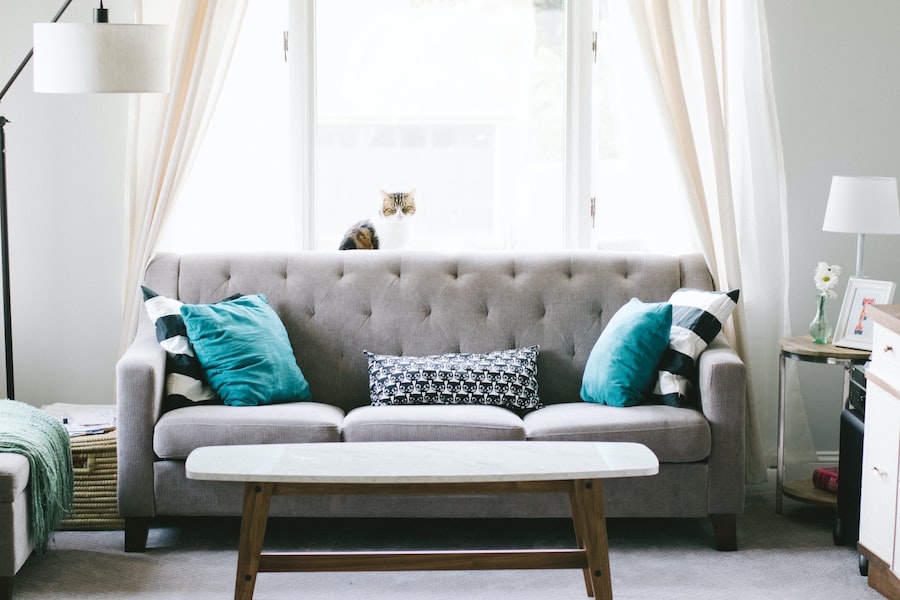
Lighting fixtures can be used in creative ways to enhance the overall design of a space. One way to do this is by using lighting fixtures as focal points or statement pieces. For example, a large chandelier in the center of a room can serve as a striking centerpiece that draws attention and adds drama to the space.
Another creative way to incorporate lighting fixtures is by using them as design elements. For example, pendant lights can be used to create visual interest and add a pop of color or texture to a room. Wall sconces can be used to highlight architectural features or create a decorative pattern on the wall.
Incorporating lighting fixtures into furniture is another creative way to enhance interior design. For example, a coffee table with built-in LED lights can create a unique and eye-catching focal point in a living room. Similarly, a bed frame with integrated reading lights can add functionality and style to a bedroom.
Lighting Design Tips for Small Spaces and Apartments
Lighting small spaces and apartments can be challenging due to limited square footage. However, with the right lighting design, even the smallest spaces can feel bright and spacious. One tip for maximizing lighting in small spaces is to use recessed lighting. Recessed lights take up minimal space and provide even illumination throughout the room.
Another tip is to use mirrors strategically to reflect light and create the illusion of more space. Placing a mirror opposite a window or a light source can help bounce light around the room, making it feel larger and brighter. Mirrored furniture can also have a similar effect.
Using multi-functional lighting fixtures is another way to maximize lighting in small spaces. For example, a floor lamp with adjustable arms can provide both ambient and task lighting, eliminating the need for multiple fixtures. Similarly, pendant lights with adjustable heights can be used to provide both general and task lighting in a small kitchen or dining area.
The Importance of Layered Lighting in Interior Design
Layered lighting is an important concept in interior design as it allows for flexibility and control over the lighting in a space. Layered lighting involves using different types of lighting fixtures at different levels to create depth and dimension. This can be achieved by combining ambient, task, and accent lighting.
Ambient lighting provides overall illumination to a room and sets the general mood. This can be achieved through the use of recessed lights, track lights, or ceiling-mounted fixtures. Task lighting is focused on specific areas where activities such as reading or cooking take place. This can be achieved through the use of table lamps, floor lamps, or under-cabinet lights.
Accent lighting is used to highlight specific objects or areas, such as artwork or architectural features. This can be achieved through the use of wall sconces, picture lights, or track lights. By combining these different types of lighting at different levels, a layered lighting design can create a dynamic and visually appealing space.
Sustainable Lighting Solutions for Modern Interiors
Sustainability is an important consideration in modern interior design. Sustainable lighting options not only reduce energy consumption but also minimize waste and promote environmental responsibility. There are several sustainable lighting solutions available that can be incorporated into modern interiors.
One sustainable lighting option is the use of LED lights, as mentioned earlier. LED lights are energy-efficient, long-lasting, and produce less heat. They also do not contain mercury or other hazardous materials, making them safer for the environment.
Another sustainable lighting option is the use of natural light. Maximizing natural light in a space can reduce the need for artificial lighting during the day. This can be achieved through the use of large windows, skylights, or light tubes. Additionally, using light-colored walls and reflective surfaces can help bounce natural light around the room.
Using energy-efficient lighting controls is another way to promote sustainability in interior design. This can include the use of dimmer switches, motion sensors, or timers to control when and how lights are used. These controls can help reduce energy consumption and extend the lifespan of the lighting fixtures.
The Future of Lighting Design in Modern Interiors
The future of lighting design in modern interiors is likely to be shaped by emerging technologies and changing consumer preferences. One emerging technology is the use of OLED (organic light-emitting diode) lighting. OLED lights are thin, flexible, and produce a soft and diffused light. They can be used to create unique and innovative lighting designs.
Another emerging technology is the use of smart lighting systems that can be controlled through voice commands or smartphone apps. These systems allow homeowners to create different lighting scenes and moods with a touch of a button. They also offer energy-saving features such as occupancy sensors and daylight harvesting.
As technology continues to advance, it is important for homeowners and designers to stay up-to-date with the latest lighting trends and technologies. This can be done through attending trade shows and exhibitions, reading industry publications, or consulting with lighting professionals. By staying informed, homeowners can make informed decisions about their lighting design and create spaces that are both functional and aesthetically pleasing.


